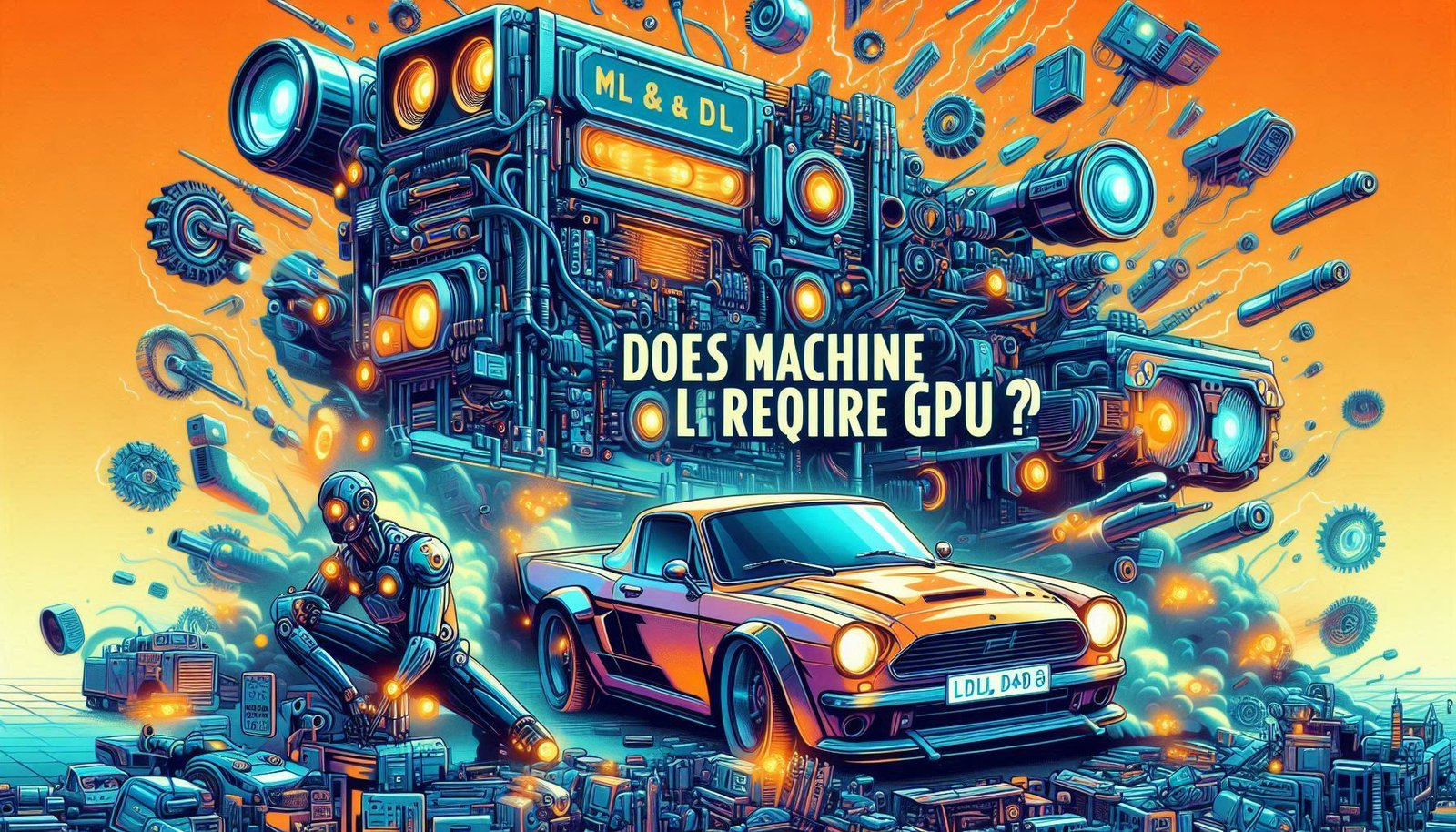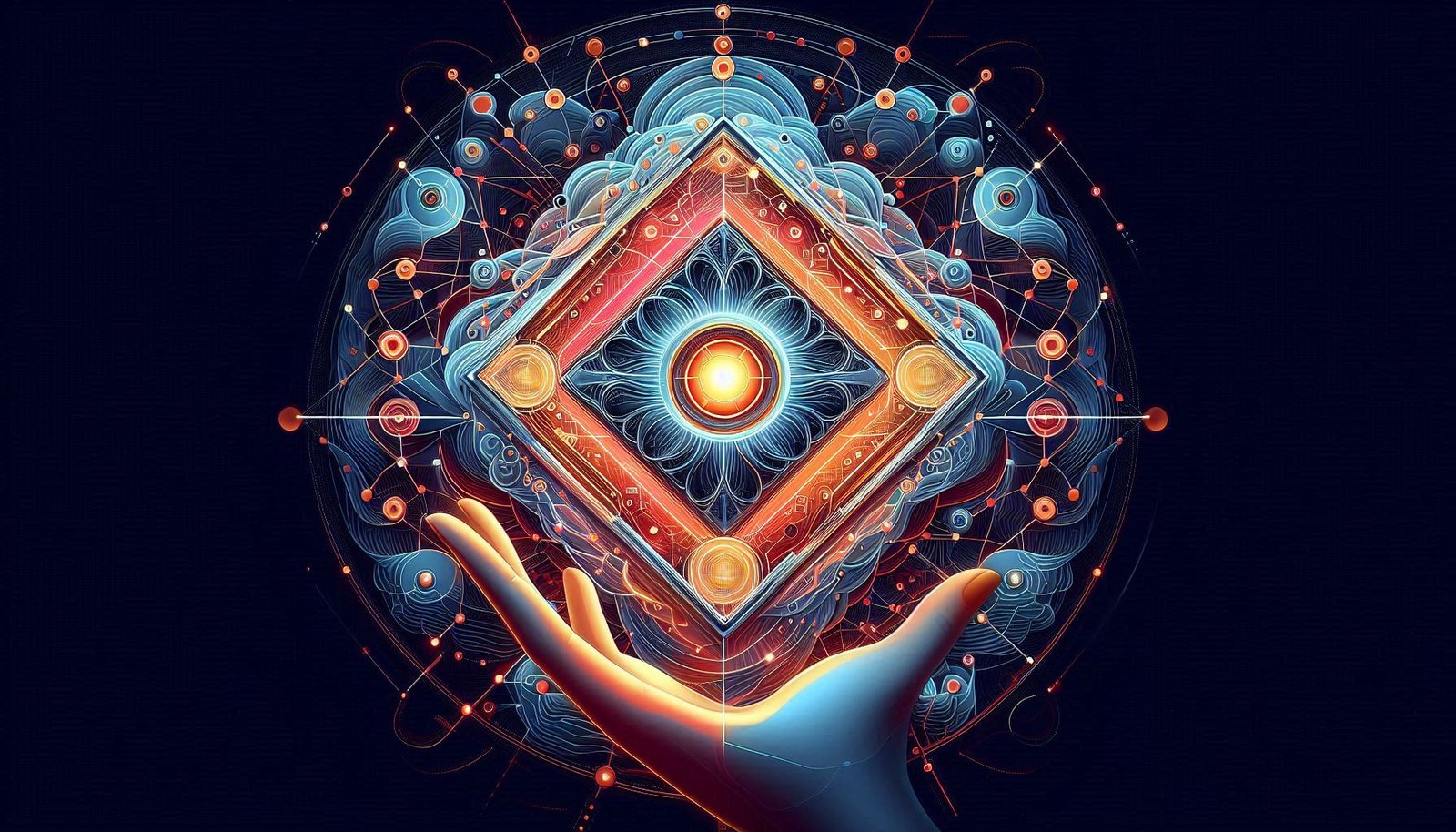ML & DL is one of the most disruptive technologies in the world. These fields have made significant progress in the last decade, whether powering self-driving cars or personalizing search results. With the increasing complexity of ML models, many people are left wondering: Does machine learning require GPU?
In this article, we discuss what role do GPUs play in machine learning and deep learning, why they matter, and when do we need one and whether we can run our ML models without it.

What is Machine Learning?
So, before I move forward with GPU chat, let’s understand what machine learning is.
It could be any of the above Machine learning is a branch of artificial intelligence (AI) that aims to develop algorithms that enable machines to learn from data and enhance their performance over time without additional explicit instructions. ML models are trained on big datasets to learn structures and insights from data for predicting or making decisions.
Some common examples of machine learning include:
- Email Spam Filters
- Recommendation systems (Netflix or Amazon)
- Image Recognition (Facial recognition software, etc)
- Speech Recognition

What is Deep Learning?
Deep learning is a type of machine learning – it leverages artificial neural networks that have been modeled after how our human brain processes information. Now, deep learning has received attention because to its ability to work with huge datasets and generate highly precise predictions.
This technology is also being used in many domains, tactically:
Deep learning algorithms are widely used in:
- Image and Speech Recognition
- Natural Language Processing
- Self-driving Cars
See more: Stylized Offline Reinforcement Learning
Does Machine Learning Require GPU?
Does machine learning require GPU?
What you use can depend on the type of machine learning algorithm you are using and the complexity of your task.
1. For Traditional Machine Learning (Non-Deep Learning Tasks):
Traditional machine-learning algorithms, including linear regression, decision trees, and support vector machines, can be executed successfully on a normal CPU. These algorithms don’t need the parallel computing power that a GPU does
Key points:
- You do not need a GPU for basic machine learning tasks like classification or regression.
- CPUs (Central Processing Units) are sufficient for these simpler models.
- Algorithms such as K-means clustering, decision trees, random forests, and linear regression typically don’t require heavy processing power.
2. For Deep Learning (Complex Tasks):
In contrast, deep learning models (which rely heavily on lots of data being used across several computing layers) can benefit immensely from the capabilities of the GPU. Because of this, it can perform a large amount of simultaneous calculations, making multiple GPUs extremely ideal for training large neural networks.
Key points:
- Yes, deep learning models require GPU.
- So, as you can see, training networks involves a lot of huge matrix multiplications and huge number crunching; so, GPUs do this work on trained data, much faster and more efficiently than CPUs.
- A deep learning model can take days or weeks to train if you are not utilizing a GPU, it can be orders of magnitude faster using a GPU.
Does Deep Learning Require GPU?
Why Deep Learning Needs a GPU:
Deep learning models demand huge computational capabilities, especially with large datasets. Training deep learning is a different process: unlike machine learning, which is significantly smaller, deep learning requires tons of data to be trained on, making the process very long.
Key reasons why deep learning needs a GPU:
- Parallel Computing: GPUs are designed for parallel processing. They can handle thousands of operations at once, which is crucial for deep learning models.
- Faster Training: Neural networks involve a large number of computations, and these are sped up when using a GPU.
- Complexity: Tasks such as image recognition, speech understanding, and natural language understanding need highly complex models that end up having a high computational cost.
Deep Learning vs Traditional Machine Learning:
| Aspect | Machine Learning | Deep Learning |
|---|---|---|
| Model Complexity | Less complex | Highly complex |
| Data Requirements | Smaller datasets | Very large datasets |
| Training Time | Shorter | Longer |
| Need for GPU | No | Yes |
| Hardware Requirement | CPU | GPU |
Why Do You Need GPU for Machine Learning?
Running these resource-intensive models requires a GPU (Graphics Processing Unit) to speed up the computation. It is specially designed for multiple tasks at the same time as opposed to the CPU which is meant for work sequentially.
Key Benefits of a GPU:
- Parallel Processing Power: GPUs are designed to handle thousands of tasks at once. This is ideal for machine learning and deep learning models that require simultaneous data processing.
- Faster Training: Machine learning models, especially in deep learning, often require long hours of training. With this model complexity, using GPUs can save you hours during training, and enable training to complete in minutes.
- Good for Big Datasets: For ML models that deal with big datasets, GPUs are the better choice because of their memory bandwidth and memory throughput.
Is GPU Necessary for Machine Learning?
Although, a GPU is not required for every machine learning task, it makes a world of difference when you deal with complex models, especially with deep learning. In classical ML tasks that don’t need a lot of data or training algorithms, a normal CPU will do.
However, if you’re working with deep learning or any model that requires training on vast datasets (e.g., computer vision, natural language processing, etc.), a GPU is highly recommended to speed up the process and improve efficiency.
When is GPU Not Necessary?
- Small Datasets: If the dataset is small, the need for GPU power is minimal.
- Simple Models: For traditional machine learning models like decision trees or linear regression, GPUs are not needed.
Does Machine Learning Require Graphics Card?
In terms of hardware, a graphics card is essentially the GPU. So when we ask, “Does machine learning require a graphics card?” we are asking the same thing: Do you need a GPU?
Graphics Card for Machine Learning:
- For traditional ML tasks: A regular CPU will suffice, and a high-end graphics card isn’t necessary.
- For deep learning: A dedicated GPU/graphics card is essential for speeding up model training and handling large datasets.
Is Machine Learning Worth It?
Because of its capacity to automate processes, make precise predictions, and discover hidden patterns, machine learning has been rapidly adopted in sectors ranging from economics to biology. Whether you want to explore machine learning and buy the right hardware (such as GPUs) depends on your requirements.
Benefits of Machine Learning:
- Automatization: ML comes to automate boring tasks and this improving businesses.
- More Accurate Prediction: ML models can predict trends with greater accuracy than traditional statistical, methods.
-
Scalability: ML models can be used in a variety of industries, including finance, e-commerce, healthcare, and entertainment.
FAQs
1. Does machine learning need a GPU?
Machine learning may not require a GPU for simpler models, but for complex tasks like deep learning, a GPU is highly beneficial.
2. Can I do machine learning without a GPU?
Yes, you can run basic ML models on a CPU. However, for large datasets or complex neural networks, a GPU would speed up the process significantly.
3. Is a graphics card required for machine learning?
For simple ML models, a CPU may be enough. However, for deep learning tasks, a dedicated graphics card (GPU) is recommended.
4. Why is GPU necessary for deep learning?
Deep learning involves large amounts of data and complex computations. GPUs can process these tasks simultaneously, speeding up model training.
5. Does deep learning require GPU?
Yes, deep learning tasks generally require a GPU due to their high computational demands.
Conclusion
In summary, machine learning does not require GPU for all tasks, but deep learning absolutely benefits from the parallel processing power of GPUs. For small datasets and less complex models, a CPU may be sufficient. But if you plan on using deep neural networks or big datasets, a GPU can massively cut training times.
In short whether you need a GPU or not, is determined by for what type of machine learning you are doing and how big your project is. So okay, if you are getting into deep learning or working with large amounts of dataset, getting a good GPU may be